This month we will be covering our visit to the 21st. Wings and Wheels Spectacular, begin our report on the Weymouth International Maritime Modelling Festival and continue the build of a pair of Springer tugs.
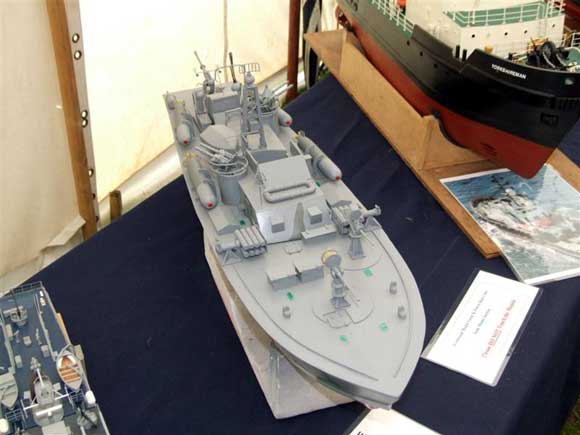
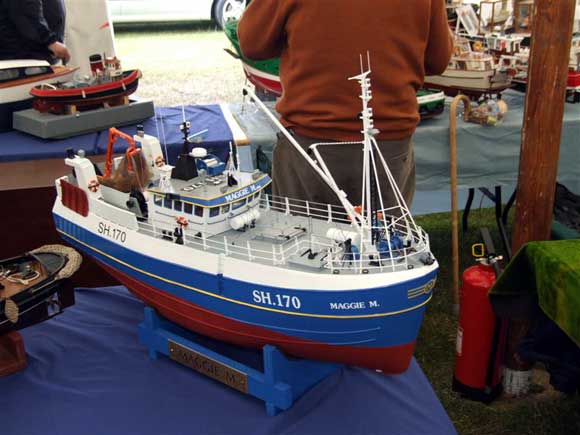
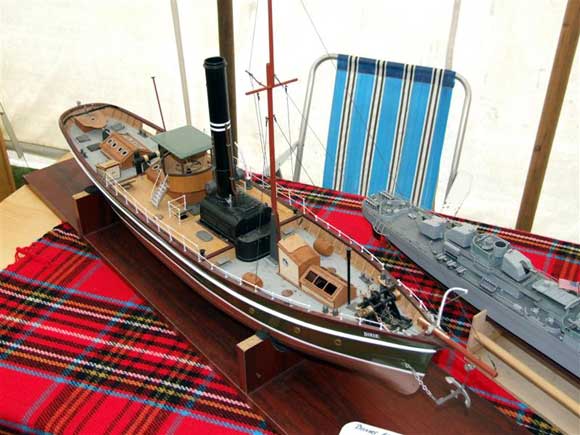
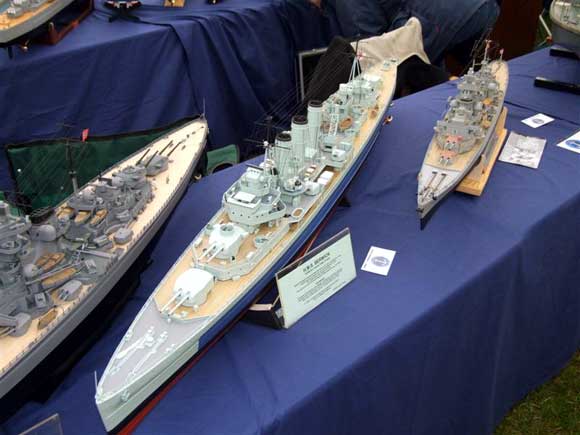
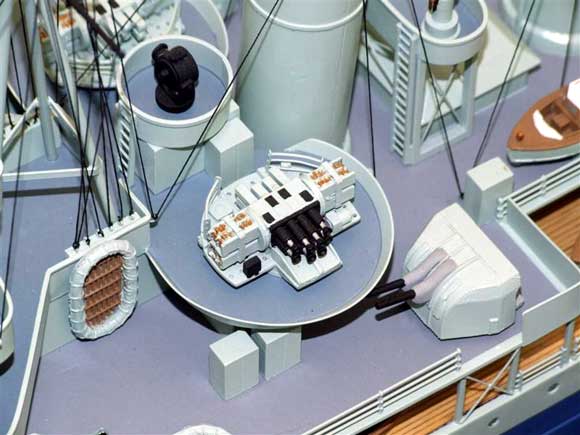
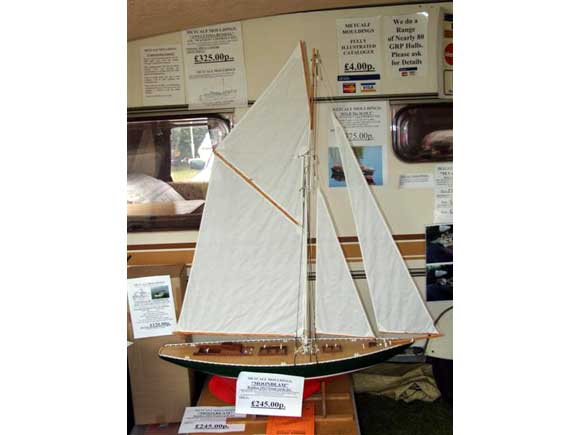
The 21st Wings and Wheels Model Spectacular
Taking place at North Weald, to the north of London and one junction up from the M25, via the M11, the venue is readily accessible by car and indeed also by underground railway. The show features flying displays by model aircraft, including large scale and helicopters. Model boats have an outside pool at the end of the flight line, as well as a marquee for static model boat display. Cars, tanks and Daleks (!) are also catered for. The Bring and Buy Sale attracts numerous model planes for sale, as well as a few model boats. Overnight the weather had been wet, but it was drying by the time we arrived on Saturday morning. Our own club, Brentwood Model Yacht and Power Boat Club was displaying in the marquee. Photo 1 is of Alan Robinson’s Higgins P.T Boat, based on the free plan included in the August 2004 magazine. The model was designed by an aeromodeller, Peter Miller, and is constructed primarily from wood. Across the gangway from our club was the organising club, Leighton Buzzard Model Boat Club, with their display. Photo 2 is of Andrew Hodsden’s Maggie M from the Model Slipway kit. Andrew is the marine co-ordinator for that club and has opted for blue colour scheme instead of the more usual green. Next to Leighton Buzzard club stand was this model Dixie built by Alan Dix, Photo 3. This is based on the Deans Marine kit of the Wacht Am Rhein, which in turn is based on the full-size vessel in the Dordrecht Maritime Museum. This is kept in service by volunteers. The model, with a length of 38ins and a beam of 7ins, is powered by a SVS ‘Heron’ Steam plant. Back on the Leighton Buzzard stand was this fine model of HMS Berwick, a County Class cruiser, Photo 4. The full size vessel was built in 1928 and scrapped in 1948. HMS Berwick saw action in the North Atlantic during WWII. The model, owned by Jack Young and built by Colin Vass, is based on a Fleetscale hull with additional detail from photographs obtained from the Royal Navy archives at Portsmouth. The model is driven by two 545 motors with belt drive to the shafts with power from two 6v 6.5 amp batteries. Photo 5 shows some of the detail of this fine model. Outside the marquee was the model boat pool and the marine traders. These included Wiltshire Models, who were also selling model hovercraft, Hunter Systems selling electric and electronic bits and pieces, including the ‘Peanut’ boats and a variety of electronic speed controllers, George Turner Models with his range of kits and ever increasing range of figures and Metcalf Mouldings, with a range of kits plus their latest release, Moonbeam, a replica 1913 Pond yacht kit, Photo 6. There were many other traders situated along the flight line selling bits and pieces suitable for the model boater. This was particularly true in the example of radio equipment, particularly the 2.4 GHz radios, but also included batteries, electric motors and gearboxes, wood and adhesives.
Before we left, we went back to the outside pool to watch the activity there and we were surprised to see this model, Photo 7, of the Mercantic. This is built from a 1970’s Billings kit and was built and sailed by Ted Gillies of the Southend Club. Built with plank on frame construction the original kit had two optional fitting packs, one for the general deck fittings, and the other for the two masts/derricks.
Enjoy more Model Boats Magazine reading in the monthly magazine.
Click here to subscribe & save.
Well, that brought our visit to an end. Our thanks go in particular to Jane Stephenson, Show Director, and Designaction Ltd. for the invitation.
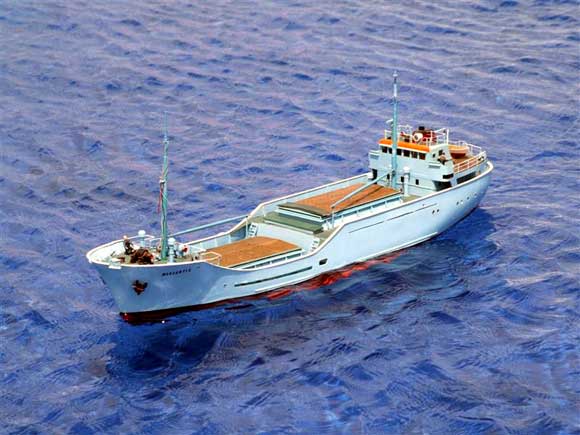
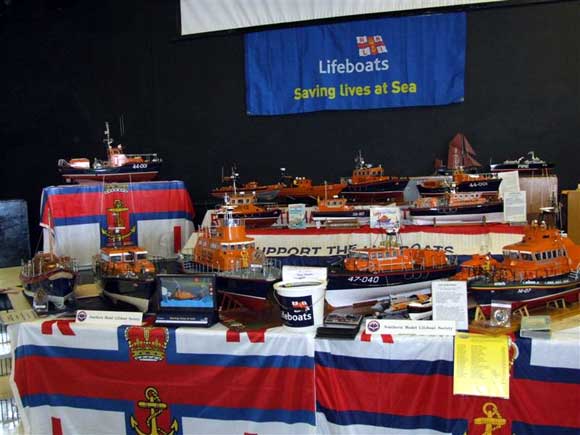
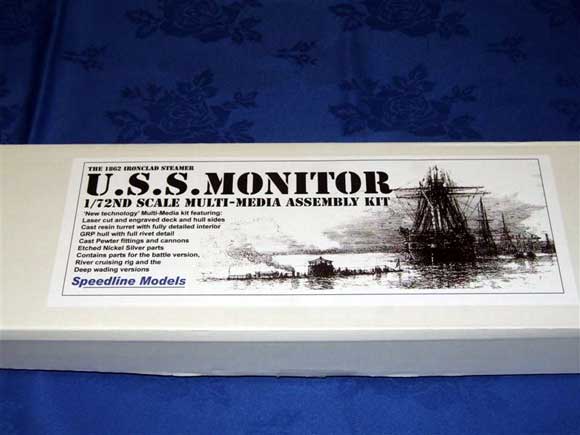
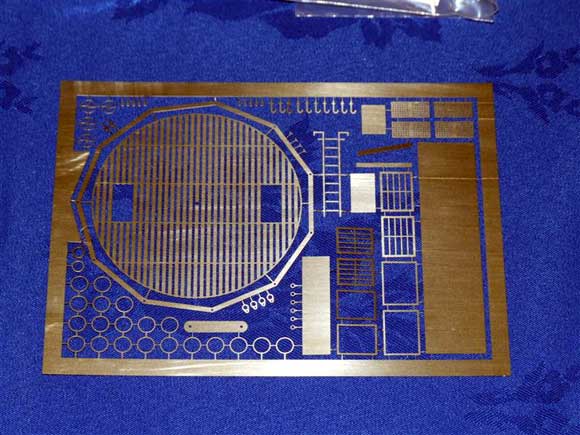
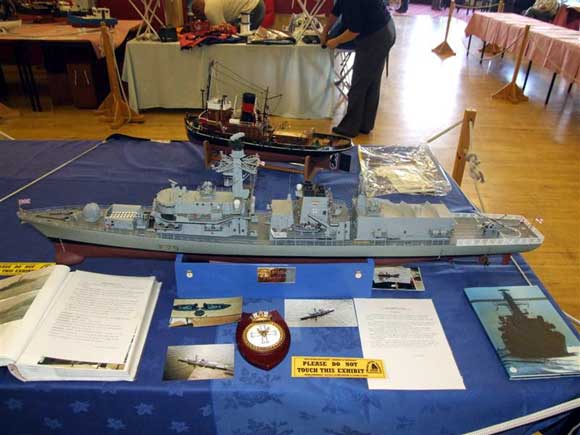
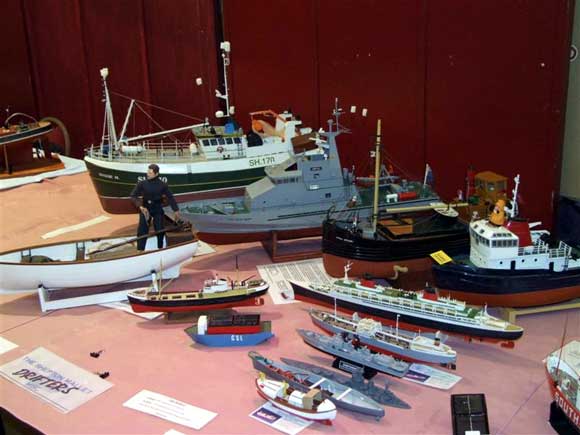
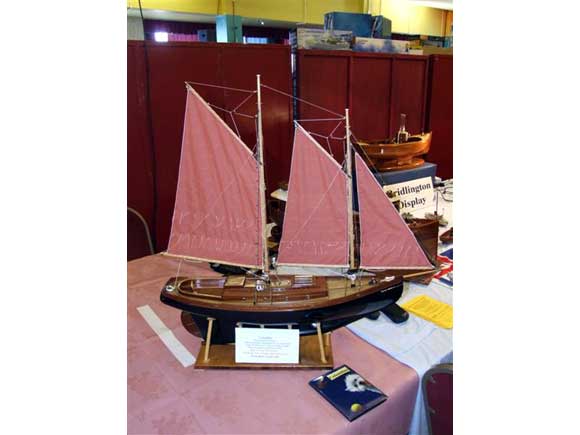
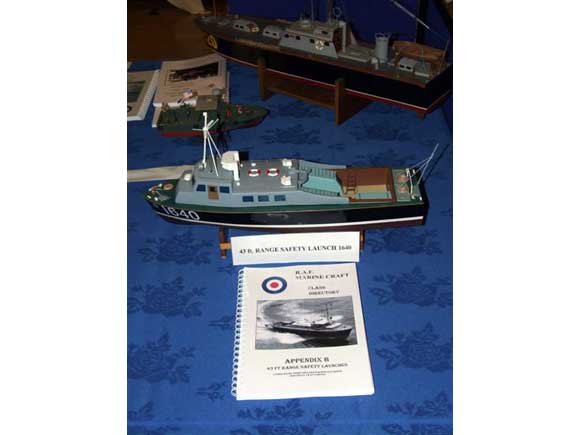
Weymouth International Maritime Modelling Festival 2007
We were very pleased to receive an invitation to the above event. Organised by Weymouth and Portland Borough Council and the South West Association of Model Boat Clubs (SWAMBC), the festival was now in its thirteenth year. We set off towing the caravan from Essex in pouring rain which didn’t bode well for the weekend. On the hill down into Weymouth the water was running like a small stream. Pulling on to the campsite the sun came out and stayed for the weekend – talk about luck! This event has a history of always being fine and sunny and so it proved in 2007. With our pass we were able to access the indoor site in the Pavilion on the Friday, the day before the exhibition proper. This gave us a good chance to have a look around while setting up was going on. The main feature on stage in the Pavilion ballroom was this display by the Southern Model Lifeboat Association, Photo 8. The ballroom was also home to many of the traders. These included Modelpower, Hunter Systems, Mobile Marine Models, Chris Brown, SHG, Midway Models, Action, Model Box, Howes, George Turner Models and Ship Finder General. Apologies if I missed anyone! The ballroom also provided sufficient space for many of the club and individual displays. Outside on the forecourt, the boat pool was set up and marquees provided cover for other activities, including paddle boat building by the youngsters. OMRA were operating off the adjacent pier and more activity was taking place on Radipole Lake, at the other end of the harbour. Back to the Pavilion Ballroom and Ian Adcock of Midway Models had one of the first of the new USS Monitor 1/72 kits from Speedline models, Photo 9. Utilising modern technology, this kit had a high level of detail, as can be seen in Photo 10 of the underside of the hull showing the rivet detail. As well as the more usual cast fittings, the kit also uses etched Nickel Silver components, Photo 11. (A full kit review is due shortly, courtesy of Dave Abbott – Editor)
As mentioned earlier, there were many club and individual exhibits. This model of HMS Portland, F79, a Type 23 Duke Class frigate, had plenty of detailed information with it, Photo 12. Built by Dennis Ridgeway of the City of Plymouth Model Boat Club, the model is based on a set of Jecobin plans of HMS Norfolk to a scale is 1/96. The GRP hull is from Fleeetscale and modified as required to suit HMS Portland. The running gear came from Radestock (now G. Sitek) and the majority of the parts were scratch built including superstructure, masts, guardrails, hatches etc. The model is propelled by two 545 motors with power from a 6v 10amp battery. Steering is by one servo and four ball joints are needed to overcome the unusual rudder angles. Six channel radio is used to give independent motor control, rudder, 4.5 inch gun, radar, navigation and RAS lights. Another club in the process of setting up their stand was Shepton Mallet Drifters, Photo 13. There was a good cross-section of models on display, from the more conventional to ‘plastic magic’. A solar powered boat as well as a sailing boat was also included. This model, Photo 14, of Columbine, a Grand Banks Schooner, was unusual in that it was built on a Kingston Mouldings hull, with the rest scratch built with detail taken from a video. Owned by John Trimmer, the model was built by Nigel Woodstock, both members of Poole Radio Yacht Club.
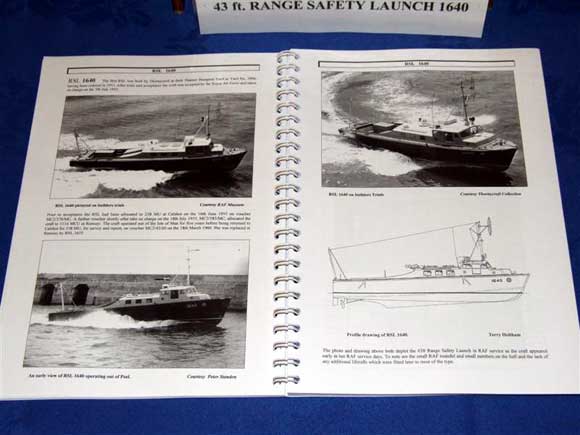
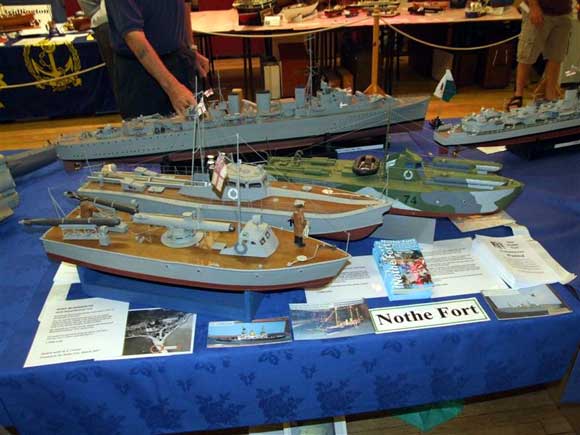
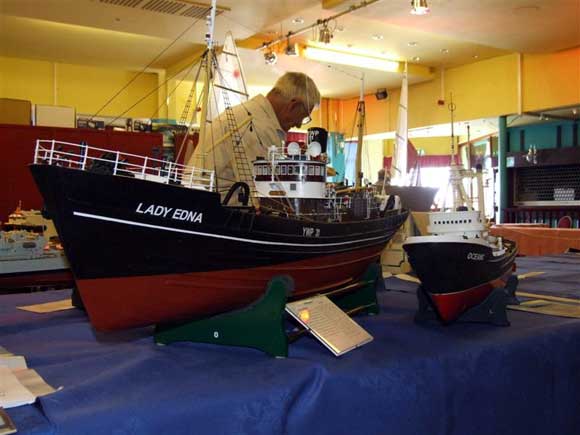
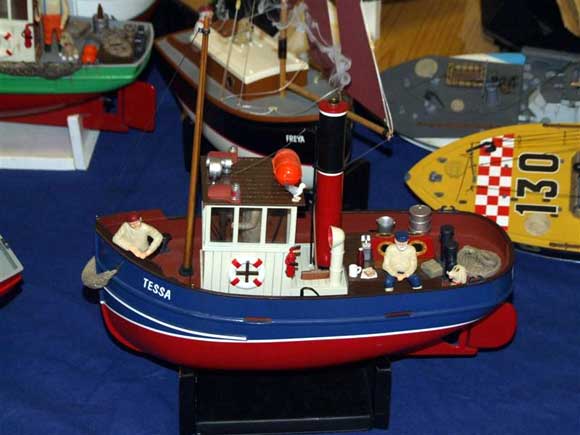
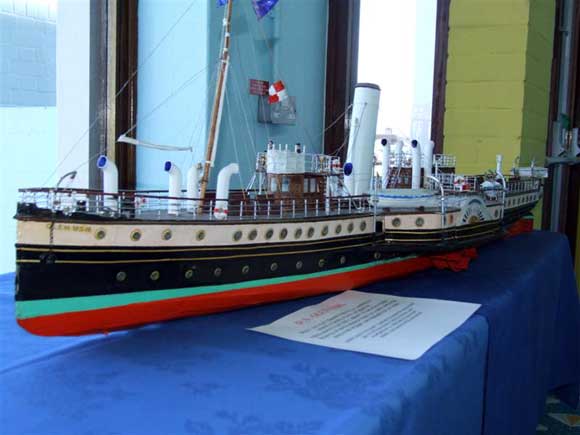
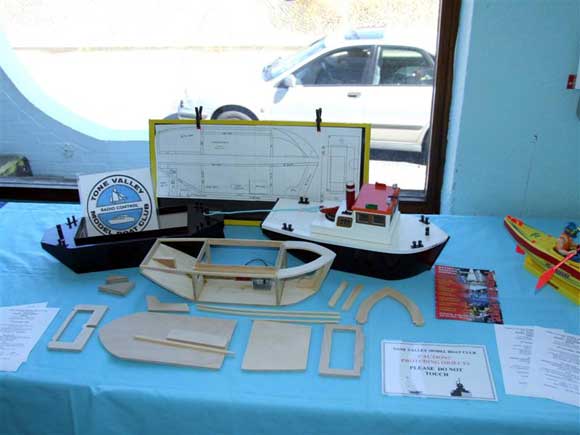
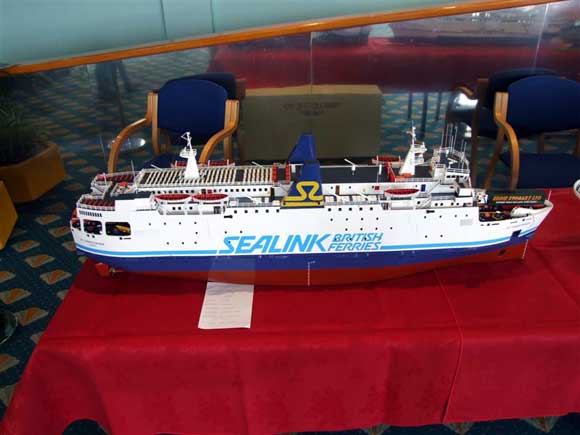
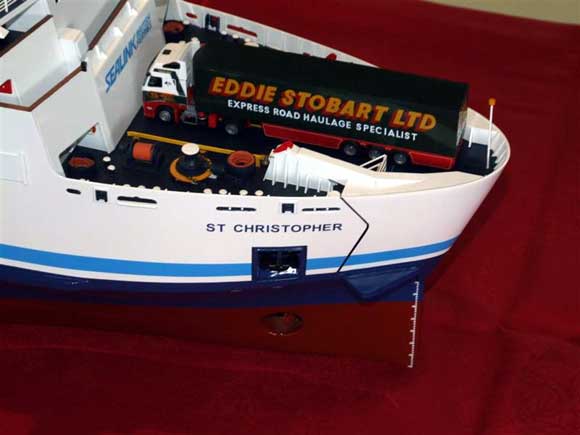
Tony Holtham, of the Small Craft Group, was exhibiting a selection of the specialist information class directories that the organisation produces. Our Photo 15 shows a Deans Marine model of a 43ft Range Safety Launch above a copy of the SCG’s publication for that class of vessel. Photo 16 shows some of the detail in the book. On the opposite side of the harbour from the Pavilion is Nothe Fort, built by the Victorians to defend Portland Harbour. It is now the Museum of Coastal Defence and part of their display is in Photo 17. The model in the foreground is of MTDV (Mobile Torpedo Discharge Vessel) Bloodhound. This was an experimental vessel built in 1937 to be used for torpedo testing. One torpedo was in the tube with two reloads carried on the deck. The firer sat on the tube to fire and the tube was rotated to reload. This was built as a Vosper private venture and was wrecked off Weymouth in 1943. The model by E. J. Caine was scratch built using ply, balsa and plastic card from plans re-drawn by the builder to 1/24th scale. The model was donated to Nothe Fort in 2007.
Brian Knight of the Yeovil and District Model Boat Club had this fine model based on the Mountfleet Models ‘Boston Typhoon’ on display, Photo 18. This was renamed and offered to represent ‘Lady Edna’, an almost identical vessel which operated out of Durham, South Africa in 1980. Additional detail included a fully fitted wheelhouse, radio room and planked deck. The model has a steam engine sound simulator, horn, smoke generator and lighting. The model is powered by a 12v motor, geared 6:1, driving a four bladed 70mm brass propeller. One of the traders previously mentioned, George Turner Models, had a model of his new tug on his stand, Photo 19. This demonstrated George’s use of resin casting to good effect.
Making our way from the ballroom to the front of the Pavilion, the corridor we used is also brought into play as an exhibition area. It was there that we saw this fine model P.S. Glen Usk, Photo 20. The full-size vessel was built in 1914 at Troon, for P. and A. Campbell’s White Funnel fleet of Bristol. She was used mostly on the Cardiff to Weston Ferry and served in both wars as a minesweeper. The Glen Usk was sold for scrap and broken up in 1963. The model was built by Geoff Yarham of Teignmouth in 2002 from recycled materials, mostly beer cans! Power comes from a Cheddar Steam plant and she has sailed for over 200 hours so far. Just along the corridor from Geoff’s model was this display on the Tone Valley Model Boat Club stand, Photo 21. Designated a competition boat, the model designed by John Courtney is built from sheet and strip materials and powered by a 540 motor. By now we had reached the main foyer of the pavilion where visitors were met by this fine model of a Sealink ferry, Photo 22. Built by Mark Mitchell of Sidcup, Kent, the St Christopher is to a scale of 1/100 with a length of 1300mm (51ins) and a beam of 210mm (8 1/2ins) As Mark’s notes say, ‘started Summer 1989 – finished Summer 2007 – 18 years not bad going!’. Photo 23 shows the detail at the bows.
Well there we must leave Weymouth for this month. I will finish off this write up next month with a look at some of the other activities at Weymouth International Maritime Modelling Festival 2007.
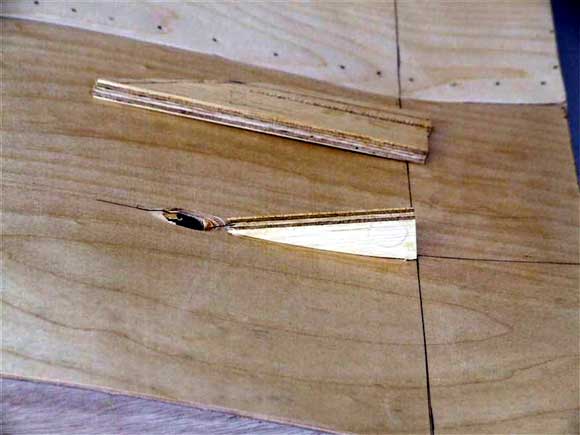
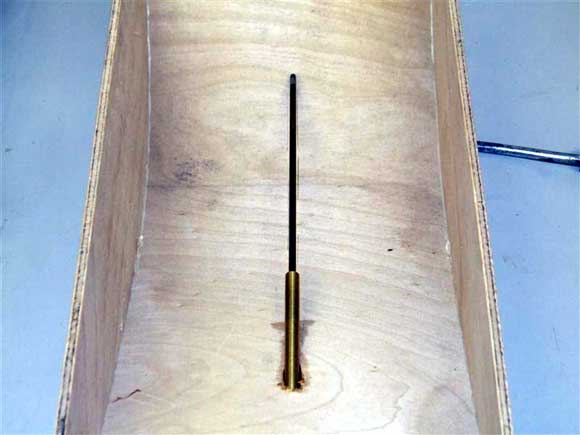
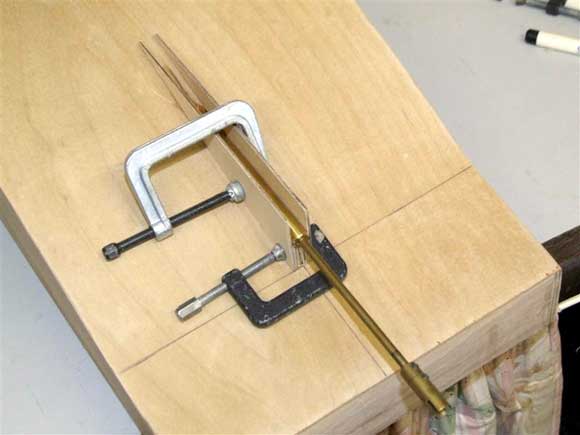
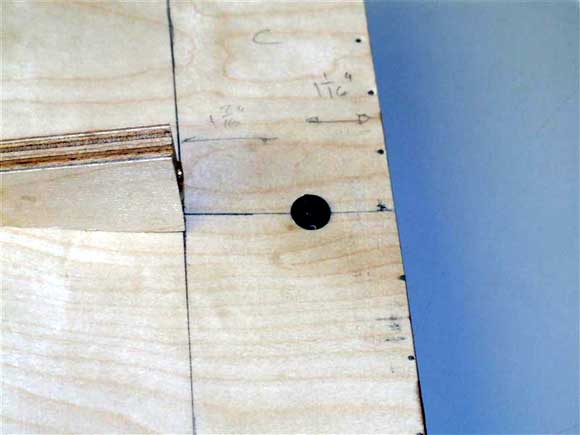
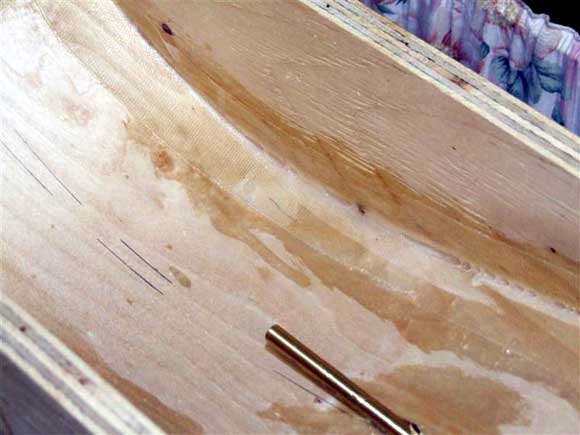
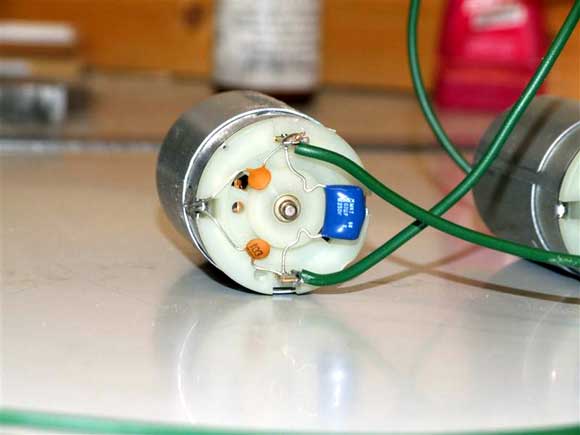
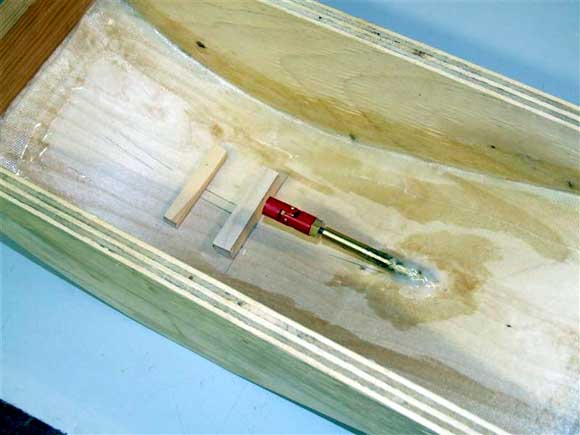
Springer Tug – Part Two
This month we will continue the build after the support skeg was glued in place last month. Using the skeg as a guide, as well as the pencilled centreline of the hull, I drilled and filed out a suitable hole for the propshaft, Photo 24. The propshaft was offered into position and aligned to the centre of the model. Photo 25 shows this process. A long brass rod was inserted into the prop. tube and extended inside the hull aligning it to the centreline. The rear of the tube was positioned so that it overlapped the wooden skeg by approx. 1.5mm (1/16in). The tube was tacked in place with superglue which allowed the prop tube to be moved if necessary. The 1.5mm ‘cheeks’ made last month were fitted each side of the skeg/prop tube, Photo 26 and the tube alignment checked again. When I was happy with this, the other part of the skeg was glued in place sandwiching the prop tube, Photo 27. The inboard part of the tube was glued with epoxy adhesive. At this stage I decided to reinforce the sides to bottom joint with fibreglass tape. I had obtained some 2in. wide tape from Fibretech GB (www.fibretechgb.co.uk) at Wings and Wheels and this was applied as in Photo 28.
The next item to be considered was the drive motor. As I was following the guidelines published on the web (www.rcgroups.com/forums/index.php – scroll down to Boats – Dock Talk, Select Springer Class R/C Boats) I followed the motor specification of using 540 type motors. I used two (one for each model) 555’s I had in stock. Photo 29 shows one of them being prepared with suppressors and wiring ready for installation.
With the motor laid in the bottom of the hull, wooden blocks were slid under the motor to align it to the shaft. When I was satisfied these were glued in place Photo 30. After fitting the shaft and propeller, the position of the rudder was determined and the hull drilled and rudder tube fitted. This can be seen in Photo 27. I’ll have to finish there and continue the Springer build next month.
Also next month I’ll finish the Weymouth visit report, pay a flying visit to the Floatplane and Model Boat Show at Child Beale as well as continue with the Springer build. Until then, happy modelling and if you wish to get in touch, please do so either via the editor or email focusonscale.btinternet.com.




